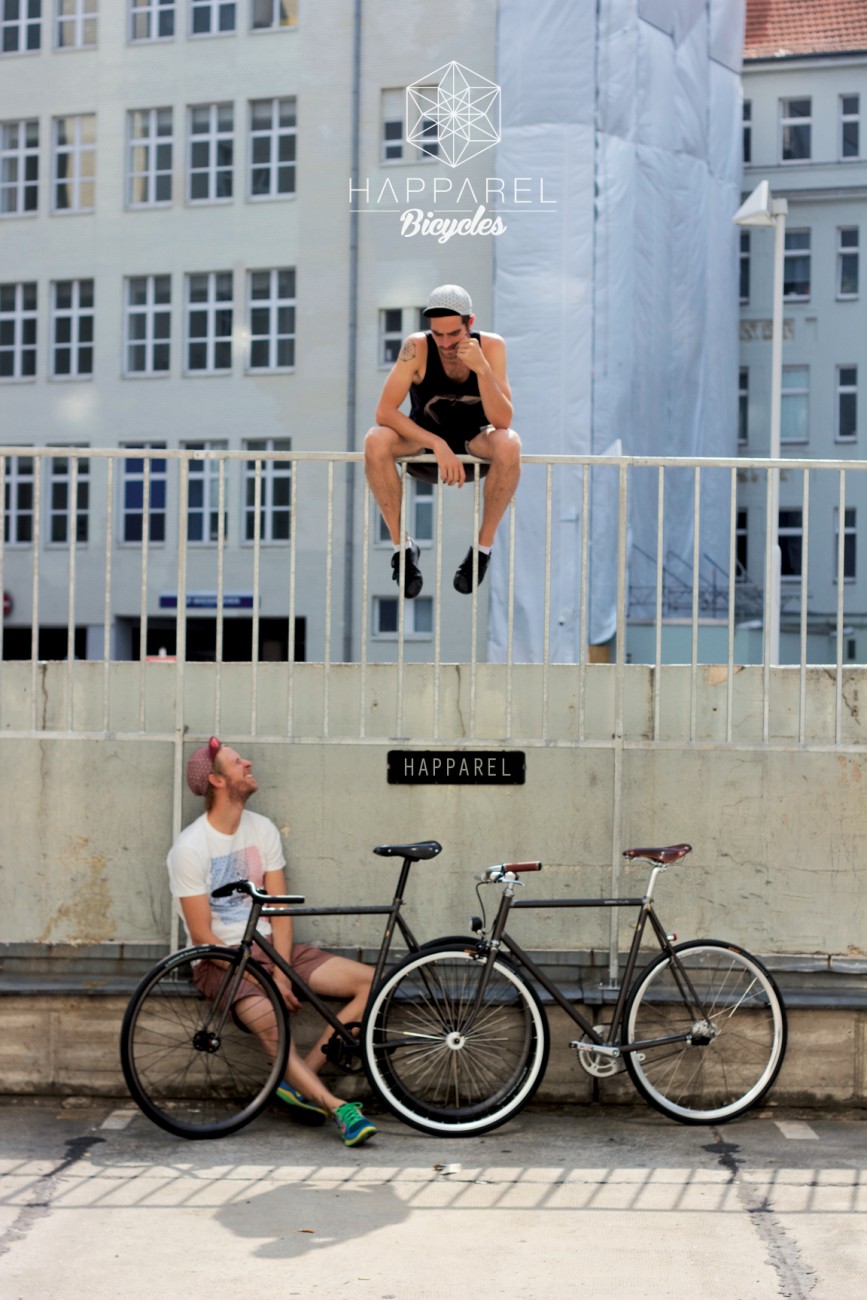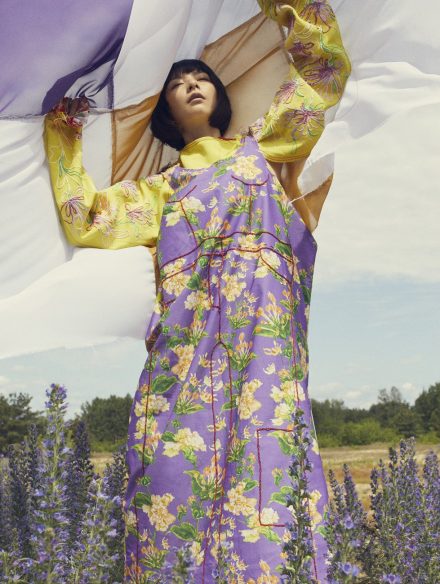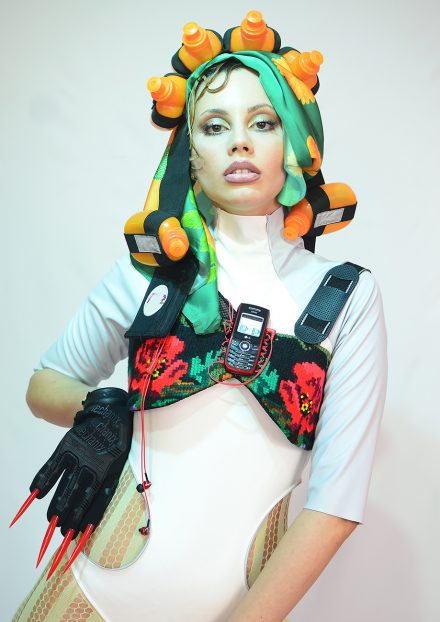 Though once considered an eccentricity particular to the canal-woven alleys of Amsterdam, cycling has in recent times pedalled headlong into cosmopolitan adoration. Synonymous not only with practicality, efficiency and fitness, the humble bike has long been recognised as a trope of the conscious city-dweller. Indeed, as time passes, responsible urban-living and cycling become ever intertwined, birthing a multitude of brands that cater specifically to a demographic marked by an acute aesthetic awareness.
Though once considered an eccentricity particular to the canal-woven alleys of Amsterdam, cycling has in recent times pedalled headlong into cosmopolitan adoration. Synonymous not only with practicality, efficiency and fitness, the humble bike has long been recognised as a trope of the conscious city-dweller. Indeed, as time passes, responsible urban-living and cycling become ever intertwined, birthing a multitude of brands that cater specifically to a demographic marked by an acute aesthetic awareness.
Yet beneath the surface of burgeoning excitement for the two-wheeled chariot lurks a pandemic of violence. Over the last 12 months alone, 8 fatalities occurred on the streets of London, 7 of which involved lorries, while here in Berlin, 2014 brought 7,699 cycle-involved traffic accidents, a figure that naturally fails to take into account innumerable non-reported incidents and near misses. But what turns this unrelenting wheel of casualty? It seems that too often, local government initiatives, despite constant pledges to secure cyclist safety, are but ersatz patches over an ever-widening gulf of crisis.
Frustrated by the brazen lack of structurally implemented rider safety mechanisms, the challenge to transform the face of safe urban cycling comes down to young innovators. Two stellar examples of such are Antoine Capeyron and Eberhard Schilling of Happarel Bicycles; working from a cosy Neukölln atelier, this duo is leading the field in actively instigating change within their community, having recently embarked on an ambitious Kickstarter campaign to take their project to the next level.
The pair exude a casualness typical of their adopted hometown, yet this does not by any means trickle over into their practice. Eberhard, better known as Ebi, states, in a manner most matter-of-fact, that “[they] know what needs to be on a bike that is actually functional”. Indeed, alongside safety, functionality and quality certainly lie at the brand’s philosophical core. When combined with a keen visual sensitivity, reinforced by Antoine’s graphic design and screen-printing background, the result is an innovative overcoming of what previously seemed to be an eternal conundrum.
It is irrefutable that there is, in the design and production of available cycling safety gear, a definite favouring of practicality over that which pleases the eye; more often than not, the result is one far from congruous with the face that modern cycling has taken on in recent times. In trademark frankness, Ebi proclaims that “helmets are uncool”, a most unfortunate truth. This does not go to say that he advocates doing away with them. In fact, both Ebi and Antoine, perhaps somewhat unusually for Berlin, wear helmets, with the former “[starting] to wear a helmet in London”, where he felt far less at ease on two wheels than he does at home. The flouting of traditional safety measures is doubtless particularly prevalent in cities lauded for their integration of cycling infrastructure, in which “[one does not] feel the need to wear a helmet so urgently”. And so, amidst a grey-scape of products that leave much to be desired, the crux of the savvy cyclist thus reveals itself; safety is hardly sexy. But how have Ebi and Antoine gone about circumnavigating this long-standing paradox?
The reflective bicycle frame, crafted using materials of the highest quality and pseudo-neurotic attention-to-detail, is Happarel’s masterpiece. Interjected by the clicks and whirs of an industrial printer, Antoine runs me through the painstaking process necessary for the creation of a single frame. Starting in Adobe Illustrator, he creates a virtual copy, measuring each tube and its diameter with the diligence of a Savile Row tailor. After the necessary sand blasting and readying of any upcyclable frames comes the application of the reflective film itself, available in a range of colours; it is an “industrial film made in Germany […], usually used for road signs. The reflective intensity is about 3x stronger than any of the sprays you can find on the market.” With regard to the reflective sprays that flood the market, Antoine assures me that any right-minded bike owner would recoil in horror at the discovery that their primary components are miniscule glass pearls, irreversibly damaging the essential mechanical elements of a bike within a matter of minutes.
Yet frame production is not the only realm in which Happarel applies its refreshingly considerate approach; the earlier comparing of the brand and London’s finest suitors is certainly not without contextual grounds. The brand’s nominal roots lie in Antoine’s screen-printing days, with Happarel existing as a portmanteau of ‘handmade’ and ‘apparel’. The brand’s fashion heritage makes itself known, not only in the slick appearance of the bike frames themselves, with the option of a bespoke design for particularly discerning customers, but in the production and sale of a range of t-shirts and cycling caps, produced under a similar ethics of resourcefulness and quality control.
In the likelihood that the fruits of Happarel’s labour have seized your attention, head on over to their Kickstarter page, have a look at the full range of offerings and give what you can. In contributing to the project, not only are you supporting trailblazers of the contemporary creative community, you are taking an active role in increasing cyclist visibility in your city. So what are you waiting for? Safety does come in numbers after all!




